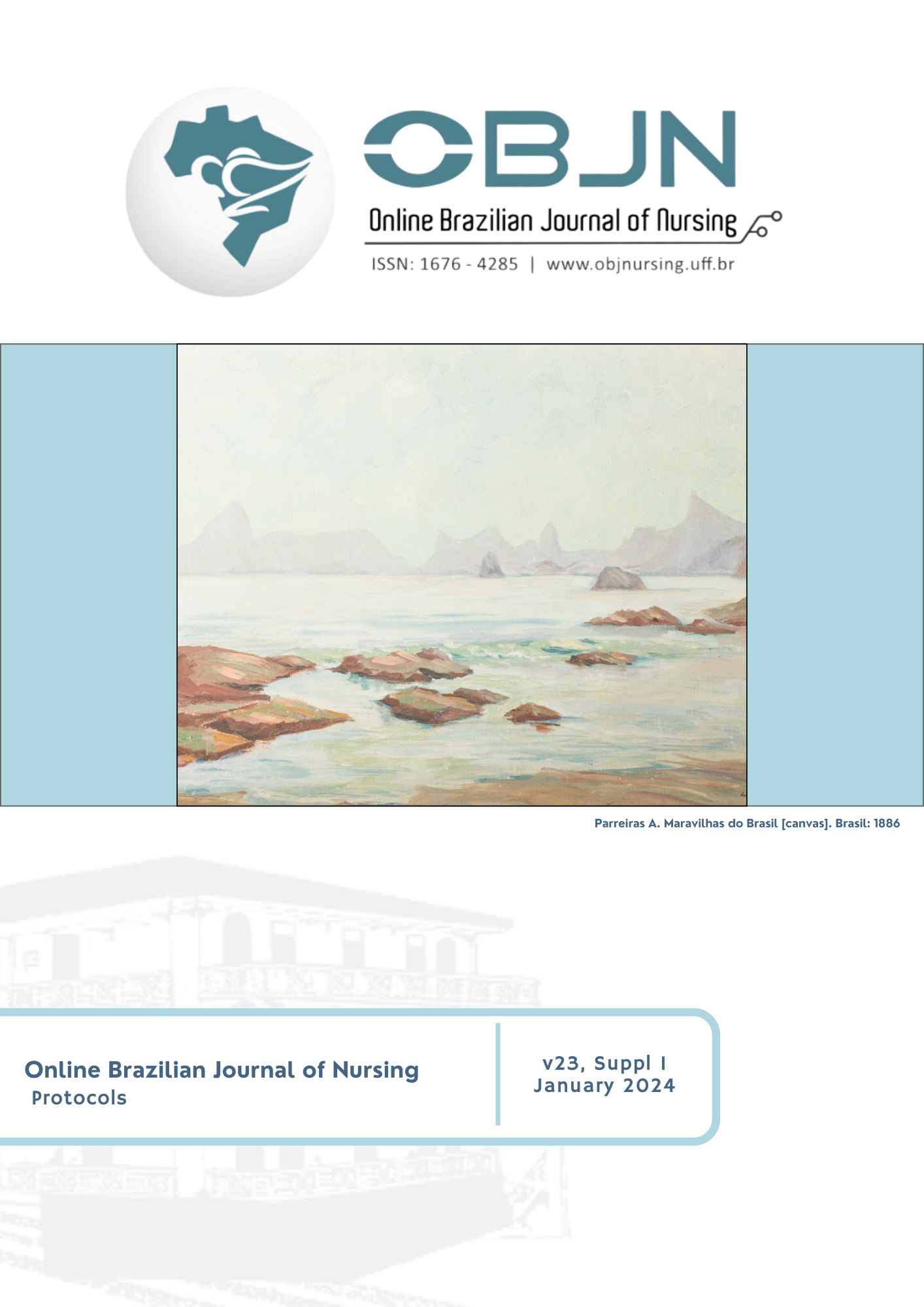Abstract
Objective: To analyze the relationship between the presence and molecular viability of Mycobacterium leprae in the bodies of contacts of leprosy cases and the process of infection and disease in these contacts. Method: This systematic review protocol was developed according to the Preferred Reporting Items for Systematic Review and Meta-Analysis Protocols (PRISMA-P) guidelines and registered in PROSPERO under CRD42022381295. MEDLINE databases were searched via PubMed, Embase, Cochrane Library, LILACS via BVS, Scopus, and Web of Science. Search terms were selected from MeSH, DeCS, and Emtree thesauruses. The search strategy was designed to retrieve studies that included at least one of the following terms: “Leprosy,” “Presence and Molecular Viability of Mycobacterium leprae,” and “Contact Transmission.” Two pairs of reviewers will select the study, with disagreements resolved by a third reviewer. Two independent reviewers will extract and enter data from the selected studies into a standardized table. A descriptive synthesis of the results will be performed narratively for each category formed. The methodological quality of the included studies will be assessed using the Newcastle-Ottawa scale.
References
World Health Organization. Weekly epidemiological record [Internet]. Genebra: WHO; 2023 [cited 23 de out. 2023];98(37):409–30. Available from: https://iris.who.int/handle/10665/372812
Shepard CC. The experimental disease that follows the injection of human leprosy bacilli into foot-pads of mice. J Exp Med. 1960;112(3):445-54. https://doi.org/10.1084/jem.112.3.445
Silva MB da, Li W, Bouth RC, Gobbo AR, Messias ACC, Moraes TMP, et al. Latent leprosy infection identified by dual RLEP and anti-PGL-I positivity: Implications for new control strategies. PLoS One. 2021;16(5):e0251631. https://doi.org/10.1371/journal.pone.0251631
Pathak VK, Singh I, Turankar RP, Lavania M, Ahuja M, Singh V, et al. Utility of multiplex PCR for early diagnosis and household contact surveillance for leprosy. Diagn Microbiol Infect Dis. 2019;95(3):e114855. https://doi.org/10.1016/j.diagmicrobio.2019.06.007
Manta FSN, Barbieri RR, Moreira SJM, Santos PTS, Nery JAC, Duppre NC, et al. Quantitative PCR for leprosy diagnosis and monitoring in household contacts: A follow-up study, 2011-2018. Sci Rep. 2019;9(1):16675. https://doi.org/10.1038/s41598-019-52640-5
Beissner M, Woestemeier A, Saar M, Badziklou K, Maman I, Amedifou C, et al. Development of a combined RLEP/16S rRNA (RT) qPCR assay for the detection of viable M. leprae from nasal swab samples. BMC Infect Dis. 2019;19(1):753. https://doi.org/10.1186/s12879-019-4349-9
Gama RS, Souza MLM, Sarno EN, Moraes MO, Gonçalves A, Stefani MMA, et al. A novel integrated molecular and serological analysis method to predict new cases of leprosy amongst household contacts. PLoS Negl Trop Dis. 2019;13(6):e0007400. https://doi.org/10.1371/journal.pntd.0007400
Gama RS, Gomides TAR, Gama CFM, Moreira SJM, Manta FSN, Oliveira LBP, et al. High frequency of M. leprae DNA detection in asymptomatic household contacts. BMC Infect Dis. 2018;18(1):153. https://doi.org/10.1186/s12879-018-3056-2
Das M, Diana D, Wedderburn A, Rajan L, Rao S, Horo I, et al. Molecular epidemiology and transmission dynamics of leprosy among multicase families and case-contact pairs. Int J Infect Dis. 2020;96:e172-79. https://doi.org/10.1016/j.ijid.2020.04.064
Vengalil S, Lavania M, Singh I, Nashi S, Preethish-Kumar V, Polavarapu K, et al. Appropriately Selected Nerve in Suspected Leprous Neuropathy Yields High Positive Results for Mycobacterium leprae DNA by Polymerase Chain Reaction Method. Am J Trop Med Hyg. 2020;103(1):e209-13. https://doi.org/10.4269/ajtmh.19-0746
Carvalho RS, Foschiani IM, Costa MRSN, Marta SN, Virmond MCL. Early detection of M. leprae by qPCR in untreated patients and their contacts: results for nasal swab and palate mucosa scraping. Eur J Clin Microbiol Infect Dis. 2018;37:1863–7. https://doi.org/10.1007/s10096-018-3320-9
Ministério da Saúde (BR), Secretaria de Vigilância em Saúde, Departamento de Articulação Estratégica de Vigilância em Saúde. Guia de Vigilância em Saúde [Internet]. 5. ed. Brasília: Ministério da Saúde; 2022 [cited 2023 Out 28]. 1126 p. Available from: https://bvsms.saude.gov.br/bvs/publicacoes/guia_vigilancia_saude_5ed_rev_atual.pdf
Tió-Coma M, Avanzi C, Verhard EM, Pierneef L, van Hooij A, Benjak A, et al. Genomic Characterization of Mycobacterium leprae to Explore Transmission Patterns Identifies New Subtype in Bangladesh. Front Microbiol. 2020;11:e1220. https://doi.org/10.3389/fmicb.2020.01220
Moraes EB. Review Protocols [editorial]. Online Braz J Nurs. 2022;21(1):e20226585. https://doi.org/10.17665/1676-4285.20226585
Moher D, Shamseer L, Clarke M, Ghersi D, Liberati A, Petticrew M, et al. Preferred reporting items for systematic review and meta-analysis protocols (PRISMA-P) 2015 statement. Syst Rev. 2015;4(1):1. https://doi.org/10.1186/2046-4053-4-1

This work is licensed under a Creative Commons Attribution 4.0 International License.
Copyright (c) 2024 Array

